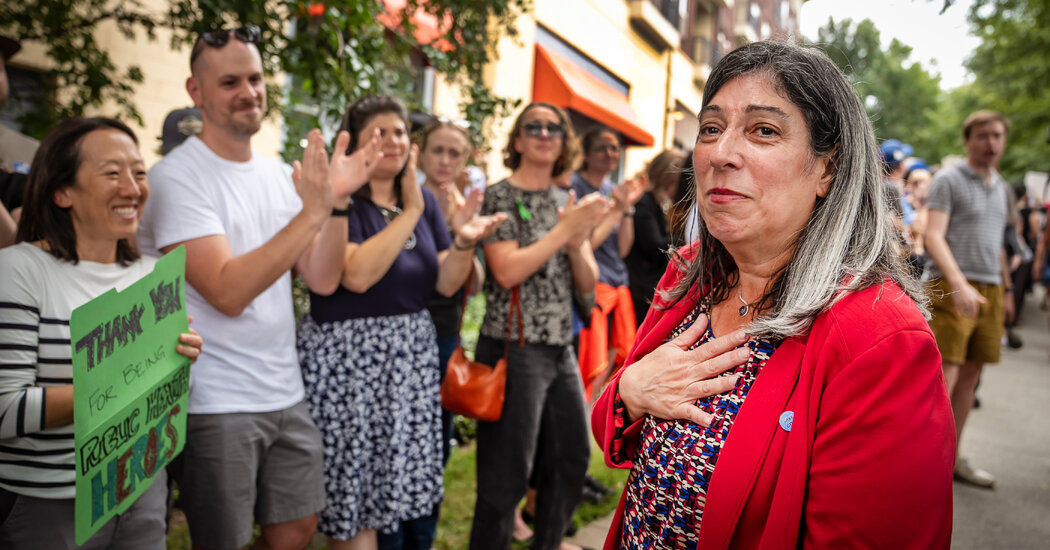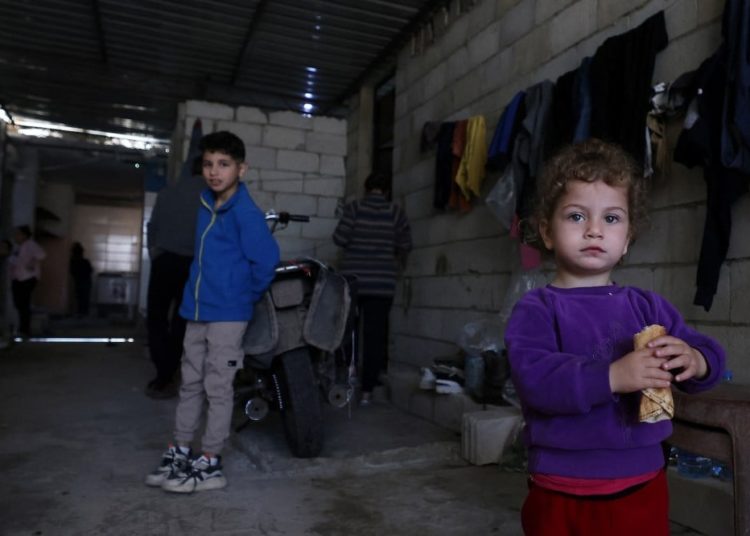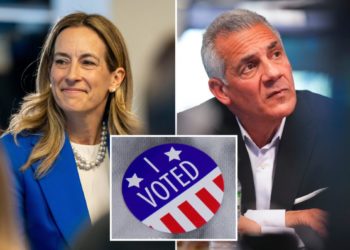Months before Robert F. Kennedy Jr. became health secretary, officials at the Centers for Disease Control and Prevention began preparing for his arrival.
Dr. Debra Houry, who was then the agency’s chief medical officer, read three books by Mr. Kennedy, as well as another by the current nominee for surgeon general, Dr. Casey Means, an ally of Mr. Kennedy.
Dr. Houry plowed through the Project 2025 blueprint and another report by the conservative American Enterprise Institute, in addition to reviewing the America First agenda. She guided directors of the C.D.C. centers as they prepared detailed briefs on Mr. Kennedy’s concerns, such as access to vaccine safety data and separating the measles vaccine from those for mumps and rubella.
Her first meeting with the Trump transition team, on Dec. 20, seemed cordial enough, and she allowed herself to hope that agency might even fare well. It has not.
In January, the C.D.C. was bruised but still the world’s leading public health agency, in the eyes of most experts. But within two weeks of Mr. Kennedy’s arrival in mid-February, his team had asked C.D.C. officials to end a flu vaccination campaign, pushed them to tout vitamin A as a supplementary treatment for measles, and postponed a meeting of the agency’s vaccine advisers.
Over the next eight months, the C.D.C. lost roughly a third of its staff, including about 3,000 employees through voluntary or involuntary separation, and another 1,300 who were placed on administrative leave.
Mr. Kennedy dismissed the C.D.C. vaccine advisers and replaced them with people with comparatively little expertise, many of whom had expressed skepticism of childhood immunizations.
In August, Mr. Kennedy fired the agency’s director, who had been in the role for less than a month, for refusing to sign off on his anti-vaccine agenda. Dr. Houry and other agency leaders resigned in protest.
During the pandemic, the C.D.C. itself recognized that reforms were needed. The agency wrestled with slow and inefficient decision-making, with large departments operating in silos.
But the administration’s assault this year has stemmed less from a desire to remedy those defects than from a deep animus born during the pandemic, several current and former agency officials and public health experts said in interviews.
“If in February or March, the secretary had come out with a 50-point plan to reform and modernize the C.D.C., then we could be quibbling with the strategy,” said Dr. Nirav Shah, who resigned in February as the agency’s principal deputy director.
But “what is eminently clear,” he said, “is that there is no grand overarching strategy.”
For critics of the C.D.C., the changes have arrived not a moment too soon. The agency had long been bloated and incompetent, Mr. Kennedy and conservative critics have said, and failed to preserve America’s health not just during the pandemic, but in the decades leading up to it.
“Secretary Kennedy is the first H.H.S. leader to recognize that the C.D.C. was failing in its core mission,” Emily Hilliard, a spokeswoman for the department, said in a statement.
The C.D.C., she added, had “drifted into politics, duplicated other agencies’ work and lost the public’s trust.
“He is replacing leaders who resisted reform, tightening conflict-of-interest rules and restoring gold-standard science as the basis for every recommendation,” the statement continued.
In March, Mr. Kennedy initiated a reorganization of the Department of Health and Human Services that echoed ideas circulating in conservative circles.
It included shifting many of the C.D.C.’s functions to a new entity called the Administration for a Healthy America, which would operate directly under his supervision. The idea was to shrink the C.D.C., focusing it more narrowly on threats posed by communicable diseases.
Months later, it remains unclear how that office will be funded or what form it might take. As a result, many of the functions the C.D.C. once performed — including injury research and violence prevention — are now up in the air.
Moreover, the administration’s execution of the plan has been blunt and poorly considered, critics say.
Last weekend, for example, it notified nearly 1,000 C.D.C. workers — many of whom were already furloughed because of the shutdown — that they would be laid off, only to discover barely a day later that hundreds had been dismissed in error and would need to be called back.
“All I see right now is wreckage and short-term gain at the expense of long-term health,” said Katelyn Jetelina, a public health expert and the author of the widely read newsletter “Your Local Epidemiologist.”
“One of the biggest questions in my head is, how small is too small until the system collapses?” she added. “That’s really scary when people’s health is on the line.”
What the administration is doing now is more like revenge than renewal, said Dr. Shah, who led Maine’s public health agency during the pandemic.
For years, the C.D.C. has borne the brunt of anger about Covid-19 policies, including lockdowns, school closings, and mandates for masks and vaccines.
“What they want to do is humiliate the C.D.C. in the same way that they felt humiliated by it during Covid, because of those affronts to autonomy,” Dr. Shah said.
Public health initiatives are generally enacted at the state level. Administration officials have not queried state health officials as to what they would like to see happen at the C.D.C., said Dr. Scott Harris, the state health officer at the Alabama Department of Public Health.
Some state officials are now worried about cuts to not only the agency’s funding but its experts, both of which they rely on heavily.
“If you want to figure out how to improve C.D.C., and you want to figure out how to improve public health delivery in the country, please consult the people who are actually doing it,” Dr. Harris said. “But no one is asking states.
“Any change you’re going to make to this one agency in the city of Atlanta is going to affect every single American, in every single state and territory,” he added.
The C.D.C.’s role is to analyze the data, make recommendations and advise states on how best to help their residents, said Dr. Anne Zink, who served as Alaska’s chief medical officer during the pandemic.
But amid the emergency, agency officials may have taken too strong a stance on public health, promoting it at the expense of personal liberties, she said.
“I think that they honestly usurped too much of the voice of what is happening within public health,” she said.
She added that states should take more ownership of public health decisions, and that the C.D.C. should function primarily as their consultant.
Agency officials have said that they did their best with evolving evidence amid a crisis, delivering recommendations as quickly as possible on when to test, how long to isolate and how often to be vaccinated.
But on at least some occasions, there was enough time to involve others and to have “a public discussion about the issues and the trade-offs,” said Dr. Joshua Sharfstein, a health policy expert at Johns Hopkins University. (Dr. Sharfstein is listed as an adviser to the C.D.C. director, but he has not been called on since the beginning of the year.)
But the C.D.C. makes recommendations only after consulting with state and local health departments, said Dr. Harris, the Alabama health official. If the agency was too muscular in its recommendations, it was because the states demanded it.
“In a small state like ours, we absolutely do not have the subject matter expertise or the resources to figure out all these issues on our own,” he said.
If states disagree with the C.D.C., they are free to vary their policies, as some did during the pandemic.
“None of us are authoritatively under the control of C.D.C.,” Dr. Harris said.
In any event, the agency had already embarked on substantive reforms before the arrival of the Trump administration.
Dr. Mandy Cohen, who led the C.D.C. in the second half of the Biden administration, brought in outside experts, streamlined operations and tried to dissolve the silos. The efforts were paying off, she said: “We were rebuilding trust across the aisle.”
She had hoped that before coming in with a sledgehammer, the Trump administration would consider the reforms already underway. It did not work out that way.
At the behest of the Trump administration’s political appointees, each C.D.C. center planned for cuts of 10, 20 or 30 percent to their staff. But the reductions in force, when they came, took none of those plans into account.
The most substantial round of layoffs in April eliminated about a quarter of the agency’s staff. The losses could have been even more severe, but Dr. Houry was able to salvage some positions.
Dr. Houry said she was shocked that the departments to be gutted were devoted to the priorities that Mr. Kennedy had outlined in his books and speeches. He has repeatedly emphasized chronic disease prevention, for example, but he eliminated a unit dedicated to reducing smoking, a leading cause of chronic disease.
Mr. Kennedy has often complained about alleged conflicts of interest at the C.D.C. But the ethics office that vets those issues was a casualty of the latest round of layoffs. Mr. Kennedy has also made sharp cuts to the center that collects data on diseases that he often cites in diagnosing the factors that are making America ill.
Each round of layoffs has been accompanied by widespread confusion, with hundreds of workers brought back each time after being fired in error.
Had the changes been handled differently, many employees would have supported reforms at the agency, said Yolanda Jacobs, the president of Local AFGE 2883, which represents about 2,500 workers at the C.D.C.
Instead, they have been wounded by what they see as the administration’s attempts to vilify them, she said: “It was like, ‘These are horrible people, they all need to be eliminated.’”
In the latest round of layoffs at the agency earlier this month, the administration initially fired experts working on measles and Ebola outbreaks, then brought back about half of those affected. Details of what exactly has been lost are still trickling in.
Some experts worry that it will take a catastrophic event, like a deadly epidemic, for people to realize the C.D.C.’s importance. The agency has been thinned out so much, and in such a haphazard way, that it cannot succeed, they say.
“It is absolutely going to fail, and it’s going to fail in a way that will follow the fault lines of prior disparities,” said Dr. Demetre Daskalakis, who led the agency’s respiratory disease center before resigning in August.
“This is going to be a thing that we’re going to have to dig out of for a decade.”
Apoorva Mandavilli reports on science and global health for The Times, with a focus on infectious diseases and pandemics and the public health agencies that try to manage them.
The post Behind the Dismantling of the C.D.C.: Reform or ‘Humiliation’? appeared first on New York Times.




